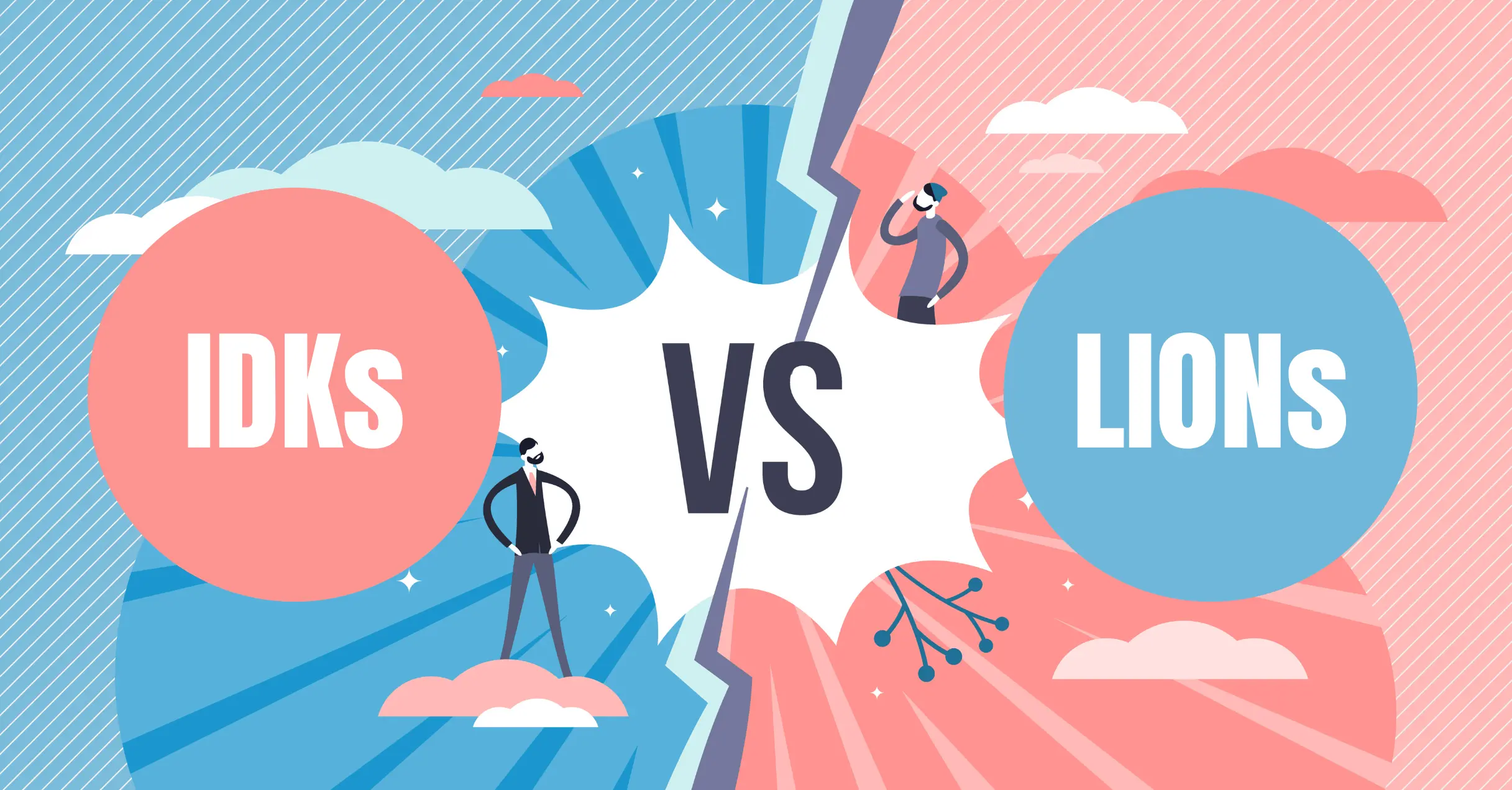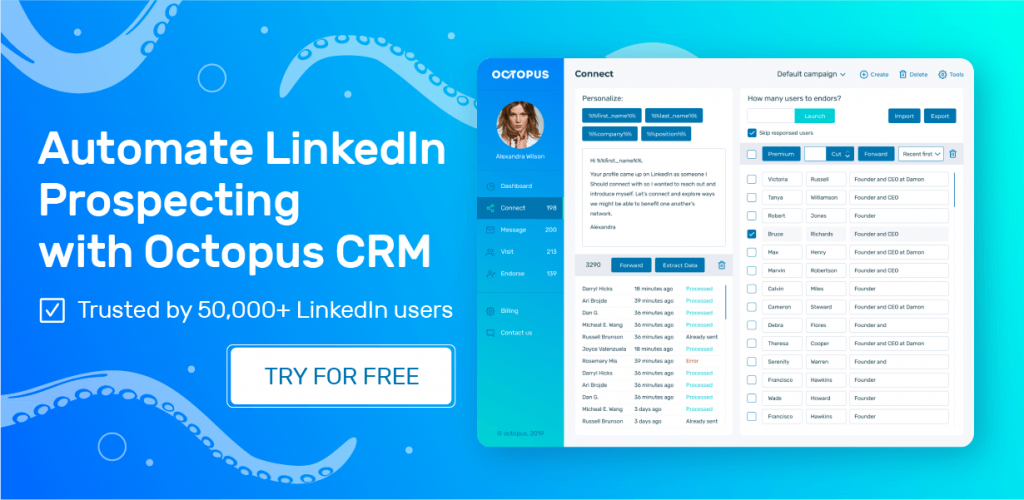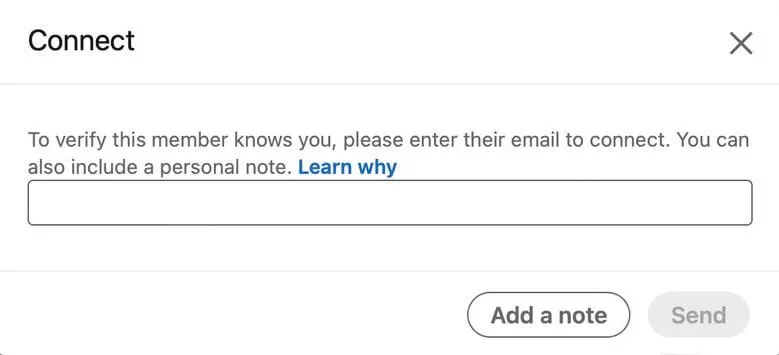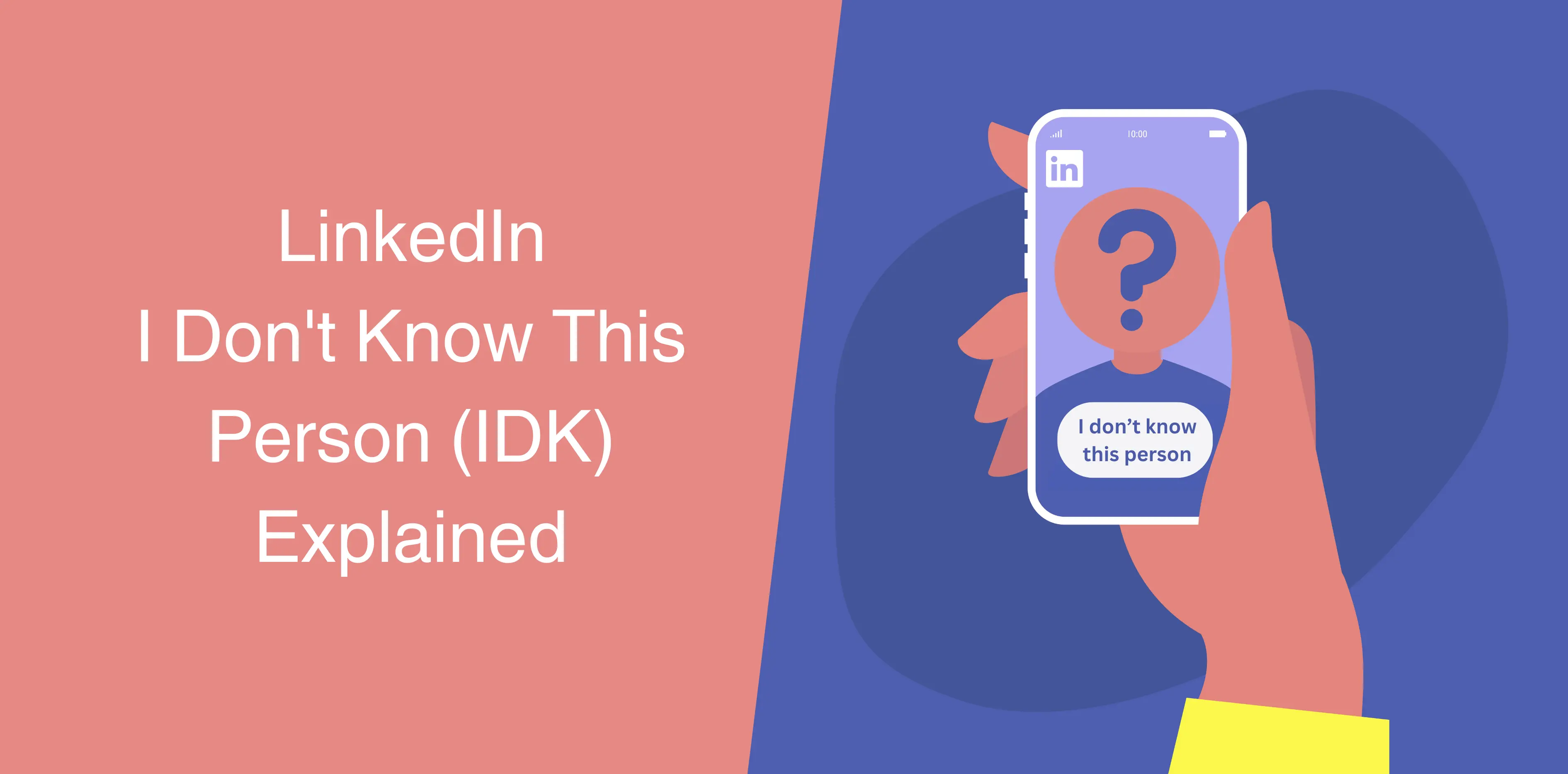One of the key features of LinkedIn is the ability to send and receive LinkedIn invitation requests to connect with others in your professional network. However, an interesting aspect of LinkedIn invitations called “I Don’t Know This Person” (IDK) warrants closer examination.
What Is a LinkedIn IDK?
When you receive an invitation on LinkedIn or send one yourself, you can either accept the invite or archive it without taking any further action. If you accept the invitation, you and the sender will connect on LinkedIn, allowing you to view each other’s profiles, exchange messages, and potentially collaborate on professional opportunities. On the other hand, if you archive the invitation, you can still accept it later if you change your mind.
However, there’s a catch when you choose to archive an automated invitation request on LinkedIn. LinkedIn presents a pop-up notification in the bottom left corner of the desktop version, asking whether you know the person who sent the invitation. If you indicate that you don’t know the person, send LinkedIn an “I Don’t Know This Person” response.
The IDK response may initially seem harmless, as you simply indicate that you don’t have a prior connection with the individual. However, LinkedIn views IDK responses in a negative light. The platform was primarily designed to help professionals reconnect with others they already knew but had lost touch with rather than open networking practices. Consequently, LinkedIn discourages excessive IDK responses.
Should You Reply to a LinkedIn Invite with an IDK Response?

When responding to a LinkedIn invitation with an IDK response, it’s a decision that depends on your networking strategy and personal preferences. While some factors may influence your choice, it’s important to consider your response’s implications and potential consequences.
In the LinkedIn community, it is generally understood that LIONs should avoid responding with an IDK. Instead, the recommended practice is to archive invitations they don’t wish to accept. LIONs keep the potential for future connections open by choosing to archive an invitation. This approach aligns with the philosophy of open networking, as it allows them to maintain a positive relationship with the sender and keeps the door open for potential networking opportunities.
Archiving an invitation without an IDK response is a strategic choice. It acknowledges that networking dynamics can change over time. While you may not see an immediate connection or opportunity with the sender, circumstances can evolve, such as moving to a new location, transitioning to a different industry, or encountering new professional circumstances. By keeping the invitation archived, you maintain a positive rapport with the sender and leave the possibility of future connection open.
It’s important to recognize that networking is a fluid and evolving process. While an IDK response may seem like a clear rejection, it’s crucial to consider the potential long-term impact of burning bridges in the professional realm. By maintaining open channels of communication and preserving positive relationships, you increase the likelihood of future collaborations or opportunities that may arise.
Ultimately, whether to reply to a LinkedIn invitation with an IDK response rests with you. Assess your networking objectives, consider the benefits of maintaining connections, and evaluate the professional value that can emerge from nurturing a diverse network or LinkedIn open network. By aligning your response with your networking strategy, you can make informed choices that align with your long-term goals on LinkedIn.
LinkedIn IDKs and Open Networkers (LIONs)

One specific group of LinkedIn users who often encounter the IDK feature are open networkers, commonly called LIONs (LinkedIn Open Networkers). These individuals actively embrace the philosophy of open networking and have a distinct approach to connecting with professionals on LinkedIn. LIONs are willing to connect with a wide range of individuals, including those they may not have a direct connection with.
For open networkers, the IDK responses they receive can be somewhat disappointing. They intend to build a diverse and expansive network that allows them to leverage professional opportunities, tap into new resources, and foster collaborations. However, it’s important to recognize that only some on LinkedIn share the same networking approach.
As mentioned in my previous article on growing your LinkedIn network, it is crucial to consider the preferences and networking style of the individuals you invite to connect. While LIONs thrive on expanding their network, it’s essential to understand that some users may respond with an IDK or simply ignore their invitations. It’s crucial to remember that this response is not a reflection of your personal or professional worth but rather a matter of individual networking preferences.
Suppose you identify as an open networker and actively reach out to professionals who may not have a direct connection with you. In that case, it’s vital to have a realistic understanding of the potential outcomes. While you may genuinely desire to connect and see value in the opportunity, it’s important to recognize that not everyone will share your perspective.
For those who do not identify as open networkers, it is advisable to communicate your networking preferences in your LinkedIn profile or contact details. By explicitly stating that you prefer not to receive unsolicited invitations, you can help manage your incoming requests and avoid unnecessary clutter in your inbox. Setting these expectations upfront can streamline your networking experience and ensure you receive invitations aligning with your networking goals.
However, even if you receive invitations, you wish to avoid accepting them; handling them professionally and courteously is important. Simply archiving the invitation without responding with an IDK is a respectful way to manage such situations. It demonstrates your acknowledgment of the invitation while maintaining the integrity of the sender’s outreach efforts.
In the dynamic landscape of LinkedIn networking, understanding and respecting different networking approaches is crucial. Whether you are an open networker or prefer a more selective approach, cultivating positive relationships and conducting yourself professionally are essential in navigating the LinkedIn ecosystem. By recognizing the diversity of networking preferences and practicing respectful communication, you can build meaningful connections and maximize the potential of LinkedIn for your professional growth.

How to Reduce LinkedIn Invite Spam
LinkedIn is susceptible to spam or unwanted connection requests like any other social networking platform. Suppose you find yourself overwhelmed with excessive or low-quality invites. In that case, there are several proactive steps you can take to reduce invite spam and maintain a more focused and meaningful network on LinkedIn.
One effective way to manage invite spam is by adjusting your LinkedIn settings. By customizing your invitation preferences, you can add an extra filtering layer to ensure that only genuine and committed professionals connect with you. Here are some settings and strategies to consider:
Require Email Address

LinkedIn offers an option to require individuals to enter your email address when sending you an invitation. Enabling this setting ensures that the person reaching out to connect with you is genuinely interested and willing to try to establish a connection. This can significantly reduce the number of unsolicited or low-quality invites you receive.
Selective Connection Requests
Be mindful of the individuals you accept or send connection requests to. Before sending an invitation, take the time to review their profile and ensure that there is a genuine professional reason to connect. Similarly, when receiving invitations, carefully evaluate the sender’s profile and consider whether their background aligns with your networking goals. By being selective in your connections, you can maintain a higher-quality network.
Read also: How to Write Connection Request on LinkedIn
Customize Invitation Preferences
LinkedIn allows you to customize your invitation preferences based on your networking goals. You can specify whether you want to receive invitations from only people you know or anyone on LinkedIn. By setting your preferences to receive invitations only from individuals you know, you can reduce the likelihood of receiving unsolicited or irrelevant connection requests.
Engage with Relevant Content
Actively engage with relevant content on LinkedIn, such as posts, articles, and discussions in professional groups. By participating in meaningful conversations and sharing valuable insights, you can attract like-minded professionals who are genuinely interested in connecting with you for professional reasons. This can help filter out individuals solely focused on mass networking or spamming.
It’s worth noting that LinkedIn is aware of the issue of invite spam and has implemented measures to address it. The platform emphasizes the importance of maintaining a high-quality user networking experience. LinkedIn has clarified that users who send out excessive low-quality invites may face restrictions or limitations on their accounts. By implementing these measures, LinkedIn aims to maintain the integrity of professional connections and ensure a positive user experience.
Reducing invite spam on LinkedIn requires a proactive approach and utilizing available settings. By requiring individuals to enter your email address, being selective in your connections, customizing invitation preferences, and engaging with relevant content, you can create a more focused and meaningful network on LinkedIn. By actively managing your networking experience, you can maximize the platform’s value and build connections that align with your professional goals.
Read also: Change Your Email Address on LinkedIn
Conclusion
In conclusion, understanding the nuances of the LinkedIn “I Don’t Know This Person” feature is crucial for effective networking on the platform. While it may be tempting to respond with an IDK when you receive an invitation from someone you don’t know, it’s generally recommended to archive it instead. By doing so, you maintain a positive reputation within the LinkedIn community and keep your networking options open for the future.
Remember, LinkedIn is a professional networking platform designed to connect individuals who have existing connections or shared professional interests. Respect the preferences and networking styles of others, and consider the potential value of expanding your network even if you don’t have an immediate connection.
